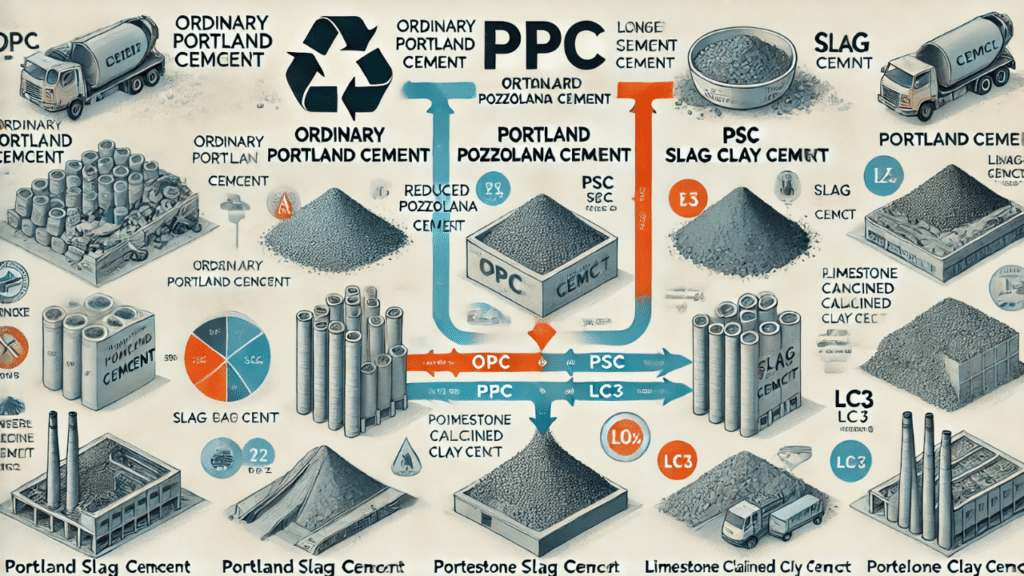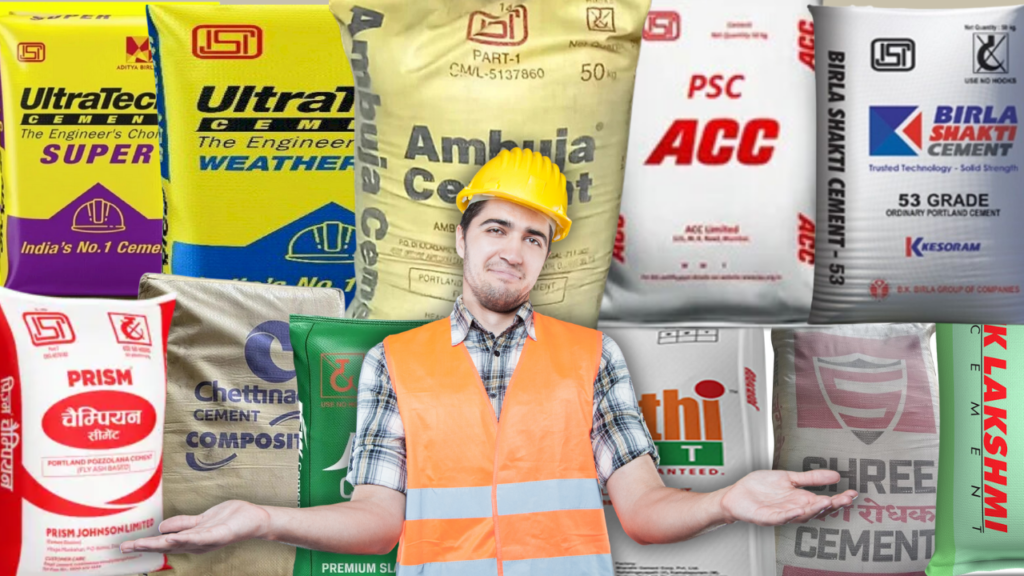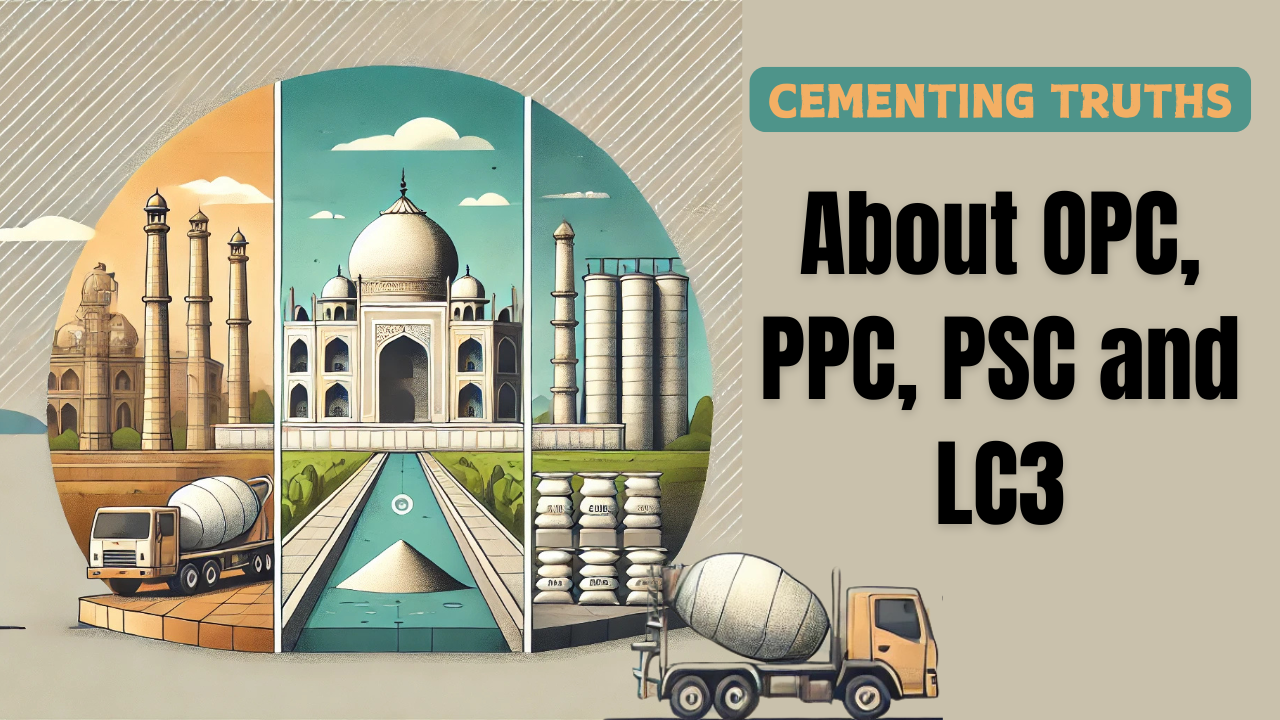Cement is the backbone of modern infrastructure. From homes and offices to bridges and skyscrapers, cement is everywhere. But did you know that cement, as we know it today, is a relatively new invention?
Before Ordinary Portland Cement (OPC) came along in the early 19th century, the world’s greatest monuments were constructed using lime, stone, and other natural binders. In fact, some of the most iconic structures were built without a single bag of modern cement!
As Dinesh Vyas, co-founder of ON THE FLOOR, explains:
“We often take cement for granted today, but the truth is that many of the world’s most iconic structures—like the Pyramids of Giza and the Taj Mahal—were constructed long before modern cement was invented.”
The Journey from Lime to Modern Cement

In ancient times, civilizations across the world, including India, relied heavily on materials like lime mortar. This was made by heating limestone and mixing it with water—a simple yet durable solution. The Taj Mahal, for instance, still stands today thanks to its lime mortar construction.
Read this article: Explore the Best Global and Indian Trade Shows for Interior Products, Flooring, and Tiles
But ancient structures didn’t just depend on binding materials. Many were built in South India using advanced stone joining techniques. Massive rocks were carved and fitted with precision, often eliminating the need for mortar altogether. This method allowed these structures to withstand the test of time, enduring natural shifts for centuries.
So, how did we move from these ancient methods to modern cement?
The Invention of Ordinary Portland Cement (OPC)
It wasn’t until the Industrial Revolution that the invention of OPC changed construction forever. It is a widely accepted fact that In 1824, Joseph Aspdin developed OPC by heating limestone and clay to extremely high temperatures. This process allowed for a material that could set faster and support larger, more ambitious projects like skyscrapers, bridges, and other infrastructure developments.
However, with the rise of OPC came significant environmental concerns. Cement production today is responsible for 7-8% of global CO2 emissions. Most of this pollution stems from the production of clinker, which requires intense heat and vast amounts of fossil fuels. Limestone, you know means CaCO3, which releases CO2 gas in the process which was trapped into the stone by the nature millions of years ago.
As Dinesh Vyas notes:
“While OPC allowed us to build faster and stronger, it also contributed significantly to pollution. Cement factories burn enormous amounts of fossil fuels to produce clinker, making the industry one of the largest emitters of CO2.”
Transparency in the Cement Industry
Beyond pollution, there’s another issue that often flies under the radar: transparency. Many consumers don’t know the difference between various cement types—OPC, PPC (Portland Pozzolana Cement), PSC (Portland Slag Cement), and LC3 (Limestone Calcined Clay Cement). What’s more, some companies market low-cost cement as “premium” products through clever packaging and branding.
Read this article: Construction Chemical Industry: Marketing Challenges
While it might sound like a marketing tactic, there are actual technical benefits to certain products. For instance, blended cements like PPC and PSC reduce the amount of clinker required, thus lowering carbon emissions by up to 40% without compromising strength. The challenge is that consumers aren’t always made aware of these differences, leaving them in the dark about the sustainability and performance benefits of using blended or composite cements.

The Rise of Blended and Composite Cements
In recent years, blended cements have grown in popularity. These cements mix clinker with materials like fly ash, slag, or limestone, resulting in a stronger product with a lower carbon footprint.
Take LC3, for example. This cement replaces huge amount of clinker (some documents mention, even up to 50%) with calcined clay and limestone, creating a product that is just as strong and durable as OPC, but with significantly lower carbon emissions.
As Dinesh Vyas highlights:
“LC3 and other blended cements aren’t just marketing gimmicks—they represent the future of sustainable construction. To build smarter and greener, we must embrace these products that reduce environmental impact without compromising on performance.”
By reducing carbon emissions during production and providing equal (or even better) durability compared to OPC, these innovative products are essential for addressing the environmental challenges the cement industry faces today.
Read this article: Time for Paint Brands to Address Customer Concerns Beyond Advertising and Ambassadors?
Why Modern Cement Has Taken Over—and What’s Next

Modern cement, while relatively new, has quickly become the go-to material for construction around the world. However, the environmental impact of cement production is significant, leading to a growing demand for sustainable alternatives like blended and composite cements.
At ON THE FLOOR, our mission is to educate consumers and professionals alike about the benefits and technical distinctions between the various types of cement available. Whether you’re building a home or managing a large-scale project, understanding the differences between OPC, PPC, PSC, and LC3 can help you make smarter, more sustainable choices.
We encourage you to join us as we continue to explore the future of cement and its role in building a greener world.
~By Team OTF
Explore More:
If you’re interested in diving deeper into Building Material, Flooring and Interiors related subjects, check out our YouTube channel: DINESHVYAS- ON THE FLOOR.
Don’t forget to follow this blog for regular updates and discussions on building materials and innovations in construction. Share your thoughts in the comments below. We’d love to hear from you!


